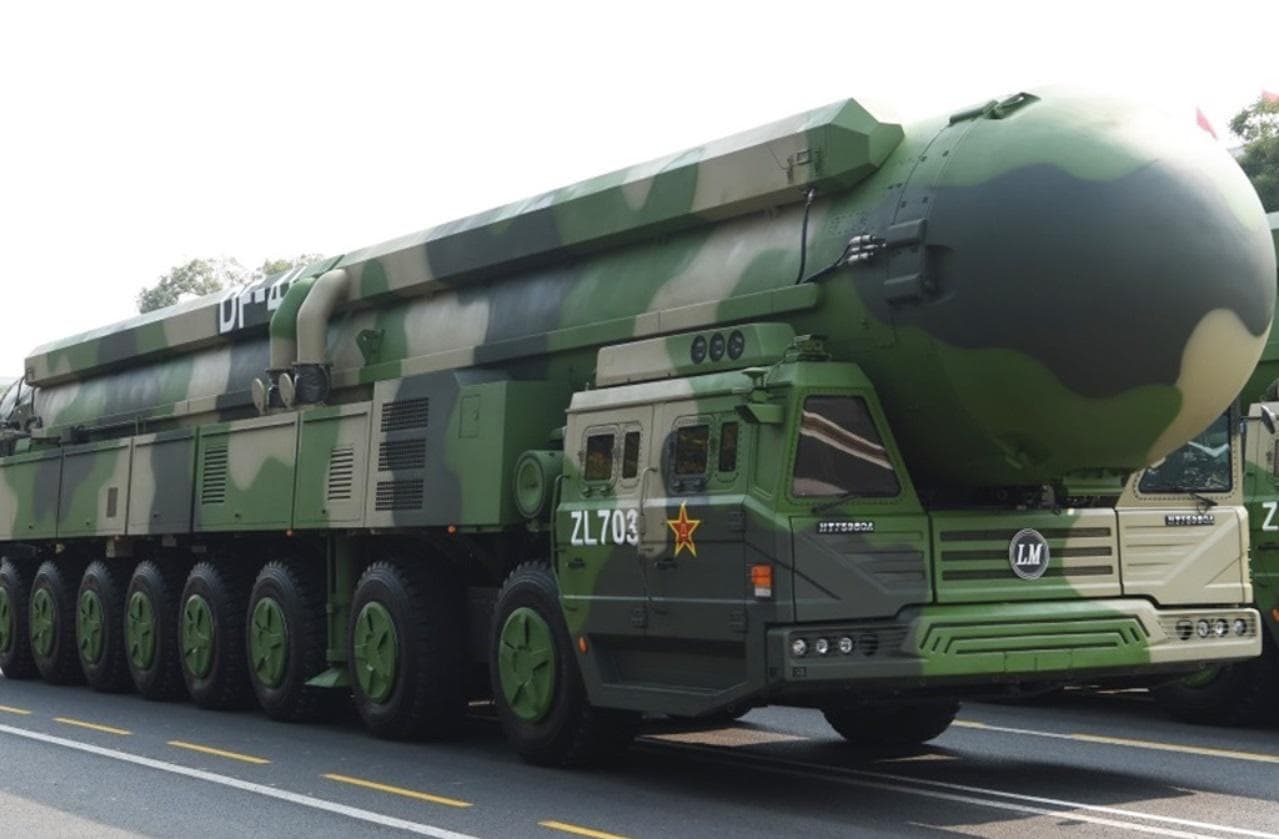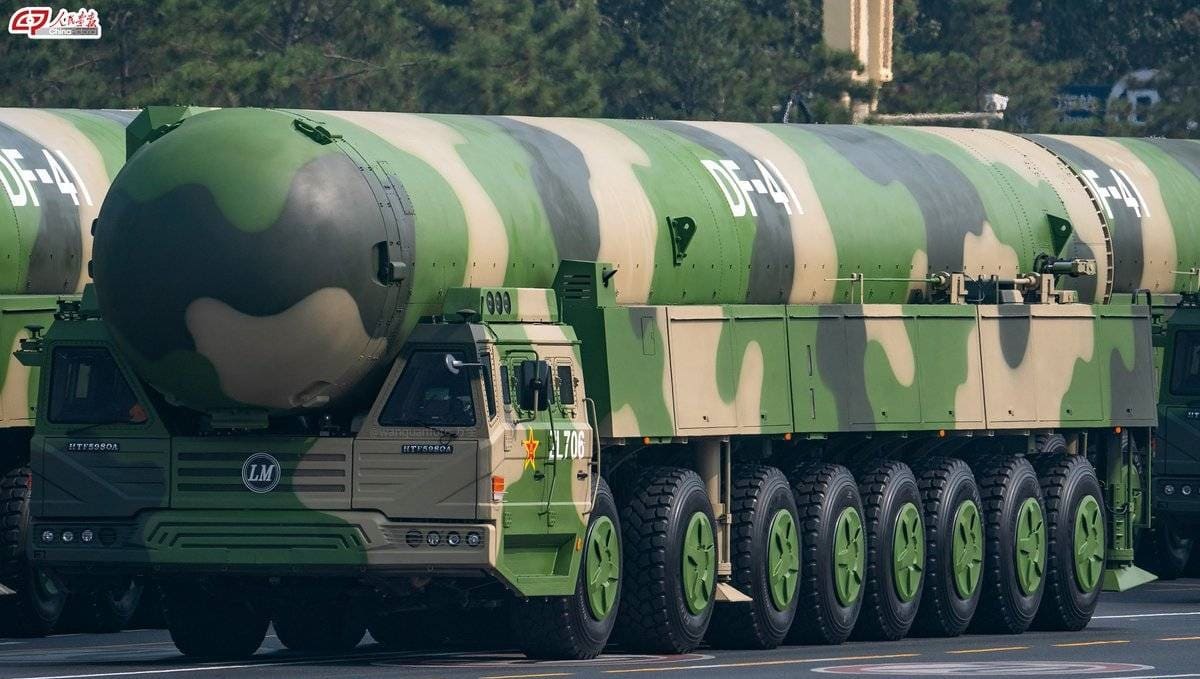Gordon Chang

Recently released satellite imagery reveals that China has embarked on what the Washington Post termed “a building spree that could signal a major expansion of Beijing’s nuclear capabilities.”
Nuclear analyst Jeffrey Lewis revealed that China is building what appears to be 119 missile silos across more than 700 square miles in the Gansu desert. Construction began in February.
The silos suggest Beijing no longer seeks to maintain only a “minimal deterrent.” The Chinese military may even be building a nuclear “war-fighting” capability.
Lewis, the director of the East Asia Nonproliferation Program of the James Martin Center for Nonproliferation Studies, has also identified another 26 silos in China.
“It’s really a startling pace of construction,” he said to CNN. “It’s much larger than anything we expected to see.”
The silos appear designed to take the DF-41 missile, which has a maximum range of 9,300 miles and can carry 10 warheads apiece. The 145 silos, if fully stocked, would pack a punch against continental American targets.
“Just this deployment alone will provide China over one thousand new on-alert warheads—1,450—almost double the day-to-day U.S.A. on-alert force and by itself a nuclear force roughly equal to the entire current U.S. nuclear-deployed force of 1,490 sea- and land-based missile warheads,” said Peter Huessy of the Mitchell Institute for Aerospace Studies to 1945.
When all of China’s warheads are counted—the country also has missiles carried on mobile launchers and sub-launched missiles—the number of the country’s warheads could rival America’s. Some believe the Chinese arsenal will exceed the American one in two years.
China has built decoy silos before, so it is not certain that all the 145 installations will be stocked with fearsome DF-41s—or that any of the holes will be filled with them. As Lewis, a leading analyst says, there is “a very good chance that China is planning a shell game.”
Maybe China is planning to deceive, yet American war planners cannot assume the best scenarios. On the contrary, in making life-and-death decisions they have to assume the opposite.
The Pentagon has to assume the worst because Beijing has done everything possible to increase American apprehension. Chinese generals have, for instance, periodically made unprovoked threats to nuke American cities. Even more ominous, in October 2013 Chinese state and Communist Party media—People’s Daily, China Central Television, PLA Daily, and China Youth Daily, among other publications—ran identical stories about how Chinese submarines, launching ballistic missiles with nuclear weapons, could destroy American cities and kill Americans by the tens of millions.
Beijing even named the 12 cities slated for destruction. These articles were played across official media, indicating they were not products of some rogue journalist but directed by those at the top of the Chinese political system. In any event, threats like this call into question Beijing’s official—and oft-stated—no-first-use policy.
Furthermore, China’s leaders have continually rejected American efforts to join with Russia in arms-control negotiations. Beijing’s refusal to talk and its insistence on secrecy about its arsenal means Washington has no choice but to believe Beijing intends to build a bigger nuclear force than America’s.
Assuming the worst includes Russia and China joining together to use their arsenals against the U.S. and its friends. Moscow and Beijing have in recent years participated in joint military drills and coordinated their opposition to the U.S.
As Richard Fisher of the International Assessment and StrategyCenter told 1945, “we have to consider that China and Russia have been engaging in nuclear missile defense cooperation for most of the last decade, so they are likely engaging in missile offense cooperation as well.”
Lewis, a long-time critic of Washington’s nuclear posture, blames the U.S. for China’s apparent nuke building drive. “We’re stumbling into an arms race that is largely driven by U.S. investments and missile defense,” he told the Washington Post.

DF-41 Road Mobile ICBM. Image: Chinese Internet.
It is true the Pentagon plans to modernize its nuclear forces, but Beijing knows that America is merely updating decades-old weapons nearing the end of useful lives. Moreover, the small-scale U.S. missile defense system is designed to deal with attacks from rogue states and has little ability to degrade a massive Chinese assault. In short, there is virtually no evidence supporting Lewis’s assertions.
As Fisher says, “China requires nuclear missile superiority because it wants to destroy democracy in Taiwan, wants to destroy the U.S.-led military alliance system in Asia, and wants to be the military hegemon on Earth by mid-century.”
Maybe even earlier. In any event, there are 119 new holes in the Gansu desert that suggest China is now shifting to war-fighting mode.
No comments:
Post a Comment